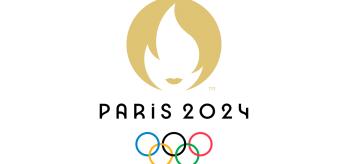Following three fascinating rounds of games, the group stages have concluded at the Men’s Olympic Football Tournament. The quarter-finalists are confirmed as France, USA, Morocco, Argentina, Egypt, Spain, Japan and Paraguay, with some intriguing pairings to follow in the last eight.
Our Technical Study Group and Football Performance Insights team are on site, attending and analysing every game across the match-day venues. In this series of articles, they give their expert overview of how each group unfolded.
Host nation France impressed as they topped Group A, winning all three games, scoring seven goals in the process, and conceding none. Despite losing 3-0 to the home side, the USA followed them into the knockout stages in second courtesy of a 4-1 victory over New Zealand and a 3-0 win against Guinea. Both teams delivered convincing performances en route to quarter-finals.
France
In possession, Thierry Henry’s midfielders played an important role for his team. Their positional flexibility was a distinctive feature of their play, as they positioned both centrally and wide, most notably, wide into full-back areas, and wide into winger areas. Forward Michael Olise was very effective when drifting into wide areas high up the pitch, where his technical brilliance allowed him to have a major impact on matches.
Out of possession, France displayed a fantastic attitude, particularly when executing their strong counter-presses. Their shape was compact when they did not have the ball, and their defenders demonstrated a strong collective ability to read the game and react accordingly.
USA
In possession, Marko Mitrović ’s side demonstrated a clear playing style, using genuine width and depth in their build-up play. They were effective at stretching their opposition’s defensive structures and could change the points of their attacks using dynamic switches of play.
Out of possession, they operated in well-organised defensive blocks, helped by strong communication between their players. They were extremely cohesive when defending as a team, with a very positive mindset and a determination to defend together.
New Zealand
In possession, New Zealand looked to progress the ball by overloading both the central and wide attacking areas. Darren Bazeley’s side netted twice in the group stage, but their lack of quality in the final third cost them opportunities to score more goals.
Out of possession, their defensive shape was generally solid. However, in their games against France and USA their defensive structure became stretched at times, leaving gaps that could be exploited.
Guinea
In possession, head coach Kaba Diawara’s team demonstrated their own distinctive identity. The speed of their attacking transitions was a stand-out feature of their strategy, with their wing-backs proving particularly effective when it came to creating chances. However, that good work was sometimes undone by mistakes and poor timing in the final third, traits that prevented Guinea from making the most of some promising situations.
Out of possession, Guinea operated in a solid 1-5-4-1 structure. However, they were sometimes guilty of dropping a little too deep too early, inviting pressure in games. They were competitive in their defeats to France and New Zealand, losing by just one goal on both occasions.





























